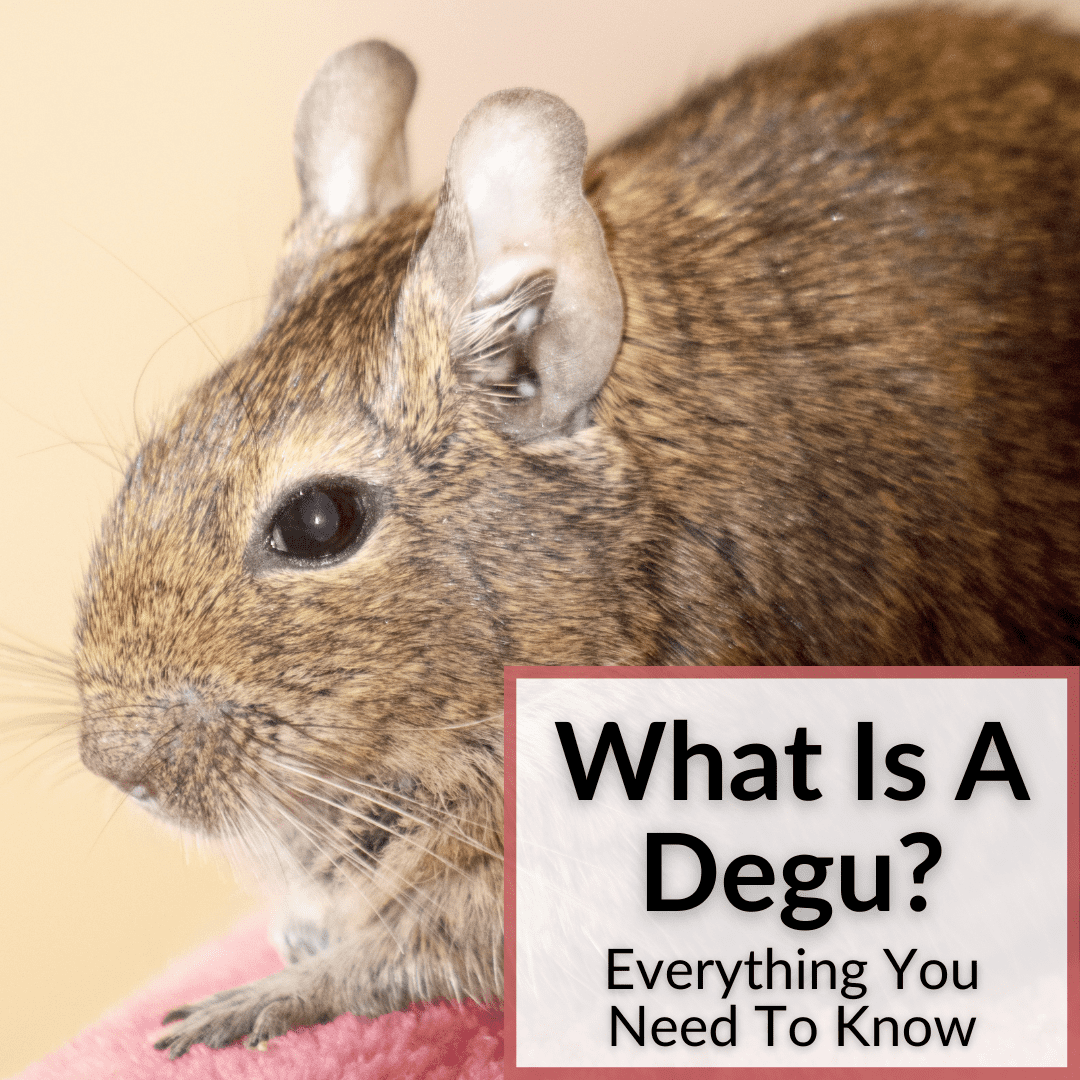
This is a site about chinchillas.
But that doesn’t mean we can’t take a few pages here and there to talk about some of the chinchilla’s close relatives.
And the degu is one of the closest. And one of the most adorable.
So what is a degu exactly?
Keep reading to find out. We’re going to cover everything you need to know about this adorable furry little rodent.
Contents
What Is A Degu?
The Degu is a member of the Octodontidae family. Octodontidae are a family of rodents native to South America.
The common degu is known as Octodon degu, and it is closely related to chinchillas, guinea pigs, and other rodents that come from the same part of the world.
Description
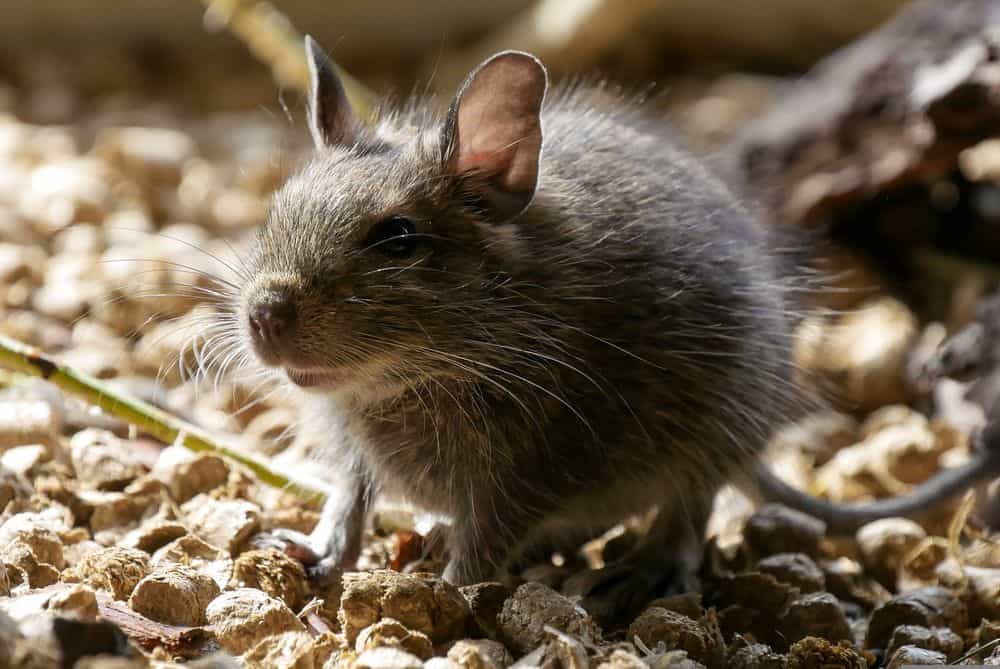
Degus have a unique appearance that is full of character. When they are adults, they are slightly bigger than hamsters, but smaller than fancy rats.
Degus have bright orange teeth, kidney-shaped ears, and a long-tufted tail covered with black bristles at the end.
Their double coats consist of a brown silky outer cover with white fur underneath. Their eyes have circles of white fur surrounding them.
The fur on a degu’s belly is UV reflective, a feature that allows degus to signal each other in the presence of predators!
Degus see the world in two colors: green and ultraviolet. Since humans cannot see in UV, the world that we see and the one that degus see are totally different.
Degus have excellent hearing and can respond to human voices. They also use a wide range of vocal sounds to communicate, most of which humans can hear.
Here are the key features of their appearance:
Teeth
Degus have twenty teeth. The molars grind the food but are hard to see, since they are deep inside the mouth cavity. Their visible teeth are the incisors in the front that have bright orange enamel.
Nose
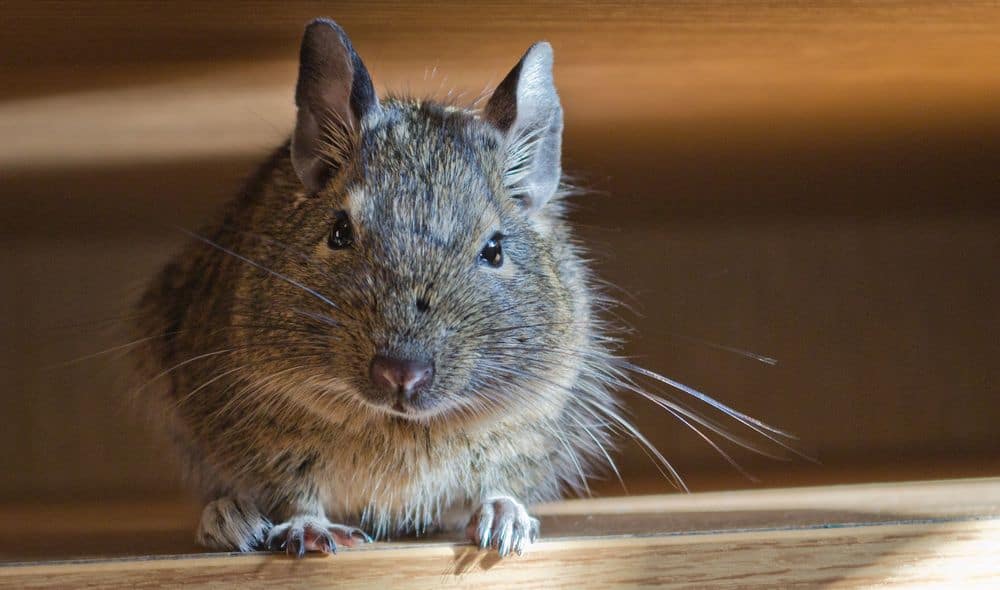
The degu’s nose is hairless with dark pigmentation. They use their noses to acquire important information through their highly developed sense of smell.
A degu’s nose also helps it gain vital information about other degus such as their age, sex, etc. Degus are nasal breathers and cannot breathe through their mouth.
Their nose also has whiskers, which they use to assess the size and shape of objects. This helps prevent them from getting stuck in narrow tunnels.
Eyes
Degu eyes appear black. However, only the pupil is black, while the iris surrounding the pupil is dark brown.
They normally have good vision, but only in the daylight. In the dark, they rely on other senses to guide them.
Ears
Degus rely on their ears to regulate their body temperature. They stick up their ears (which look pink due to the increased blood flow) when they are feeling warm.
On the other hand, the ears fold down and appear pale if they are feeling cold. Degus have sensitive hearing and startle easily from loud noises.
Coat
Degus molt their coat twice a year. The main shedding is in spring when they change their coat for a thinner summer coat.
Degus also have agouti hair which means, instead of single solid coloring, the hairs are banded in two or more colors.
This helps them camouflage in the wild. Common coat colors in captive degus are champagne agouti, blue, and white patched agouti.
Tail
Degus shed their tail in defense to protect themselves from other animals. That is why you should never hold your degu by its tail.
Habitat
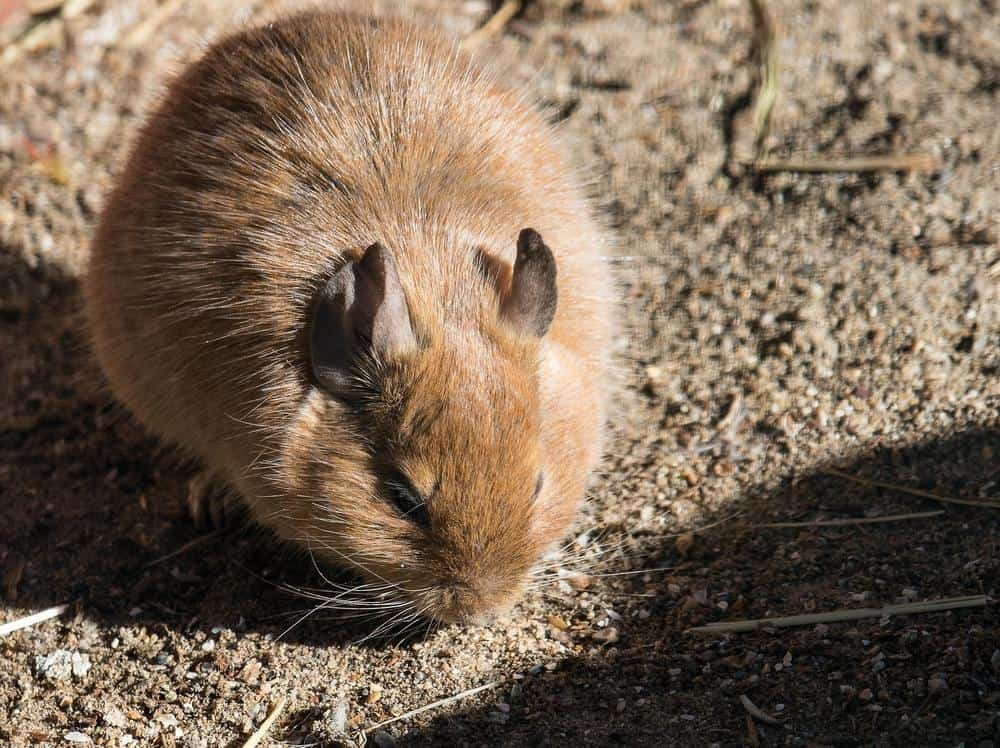
Degus are extremely rare, because they are only found in one part of the world: Chile in South America. These unique rodents live between the Pacific Coast and the Andes Mountains.
Since they cannot live at high altitudes, unlike chinchillas, you will mainly find them along the sea level, where the weather is warmer. Degus have several special adaptations to live in a semi-arid environment.
One adaptation is their ability to conserve water. They do not sweat and, like elephants, rely on the blood flow to their kidney-shaped ears to keep themselves cool.
They also have special cells in their nasal passages to prevent water loss through breathing. Degus also produce concentrated urine.
Another major adaptation in degus to survive the dry and harsh Chilean climate is in their diet. The only vegetation available in the environment is dry, long, and fibrous grass or herbs. To chew this dry grass, degus need special teeth that constantly keep growing to make up for all the wear they undergo.
Behavior
Wild degus build a series of burrows for sleeping, storing food, hiding from predators, and raising their young. These underground burrows also keep them cool in their dry environment.
Degus are semi-fossorial which means that they spend some time in their burrows and the remaining time above ground foraging for food.
They are also diurnal, meaning they are active during the day. This contrasts with chinchillas who are crepuscular (but not nocturnal, as is commonly thought).
Degu activity also depends on the ambient temperature. If the weather is extremely hot they spend the hottest part of the day resting in their cool burrows and foraging for food in the early morning and around dusk. Taking afternoon naps also helps them conserve their energy.
Degus are social animals and live in groups. Most groups consist of 4 to 6 breeding females and 1 to 2 males. Some smaller groups also have only “bachelor” males.
Being in a group helps degus feel safe from predators like Culpeo foxes and buzzards. It also helps them finish arduous tasks like digging burrows in a short time and without spending too much energy. Degus form digging chains to make their burrows.
Diet
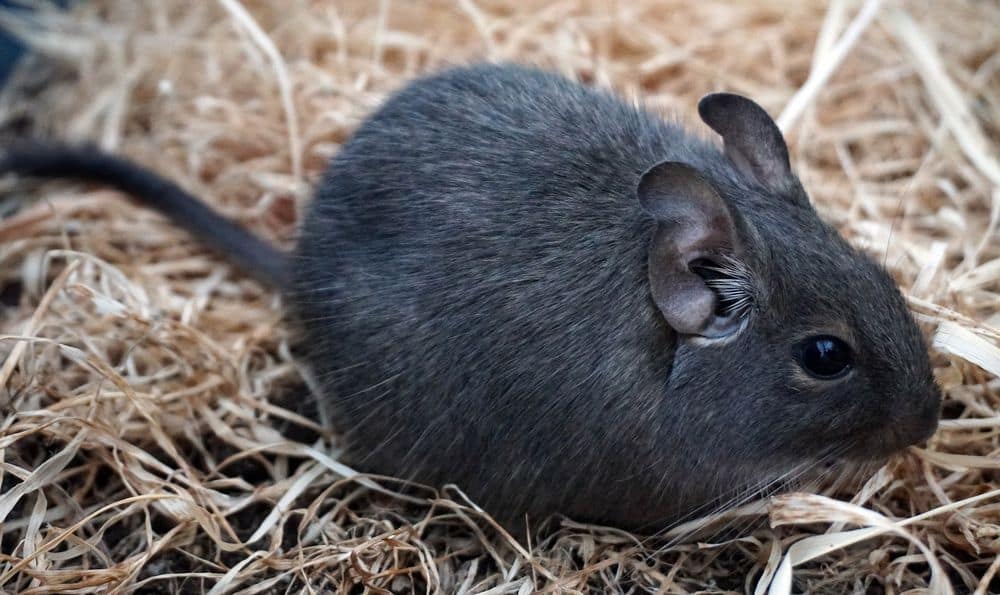
Degus are herbivores. In the wild, they forage on hay, grass, shrubs, and herbs. They also eat leaves, stems, bark, and roots.
Captive degus need a constant supply of hay. In addition, you should feed your pet commercial degu nuggets and leafy vegetables. The commercially available degu (or chinchilla) pellets is the best degu food for your pet.
Reproduction
Degus typically mate in early winter, which is around June to July in the Chilean Andes.
When a male pursues the female, he will chase her around, nuzzle her, and also make nose-to-nose contact. Once the mating is over, the male degu tends to squeak for over 20 minutes. A female degu will start showing a round, full belly once she is pregnant.
A pregnant female can produce 1 to 12 pups after a 3-month gestation period. Degus usually have babies twice a year.
Degus As Pets
Degus make excellent pets. They are friendly and intelligent compared to many other similar small pets. They are social creatures and generally not afraid of humans. Some people compare them to chinchillas, gerbils, and squirrels.
If you buy a baby degu, remember that it will grow rapidly. Therefore, you may want to buy a cage that can accommodate your growing degu. The cage should be set up with a running wheel.
If you keep multiple baby degus, they will make a lot of noise. For that reason, you should avoid placing their cage in your bedroom. Otherwise, they will not let you sleep. Your diurnal pet will sleep at night but also wakes up for a few hours and gets noisy.
Degus hate being alone. Even if you give your pet a lot of attention, it could still get depressed or aggressive without the company of its own kind.
Its lifespan could also decrease considerably. It is always best to keep multiple degus. At the very least, keep them in pairs.
What A Degu Is: Final Thoughts
The degu is an adorable little rodent that calls the Chilean Andes home, just like the chinchilla. But it can’t live at the same altitudes as chinchillas and there are numerous other differences as well. Still, they are quite similar and degus are found on most lists of animals that look like chinchillas.
Hopefully you now know much more about the degu. If what you have learned makes you want one as a pet, make sure you double check whether they are legal to keep where you live. If so, go ahead and get one. They make for amazing little pets!
Leave a Reply